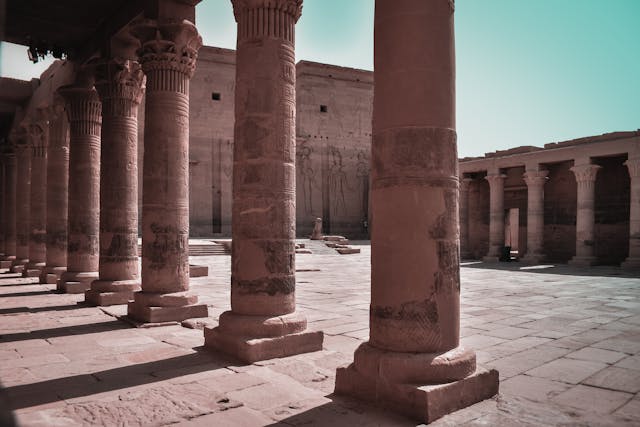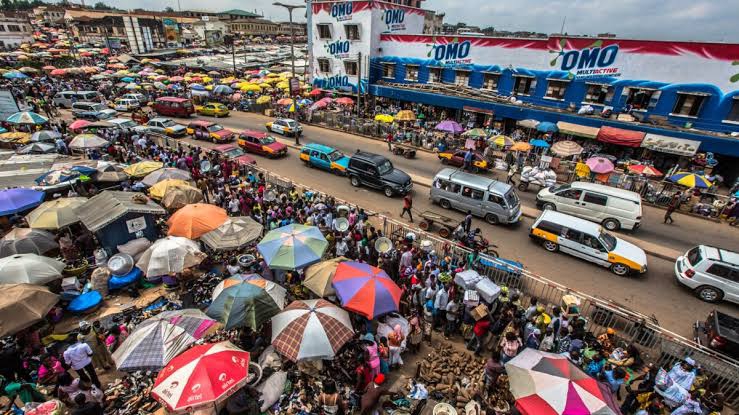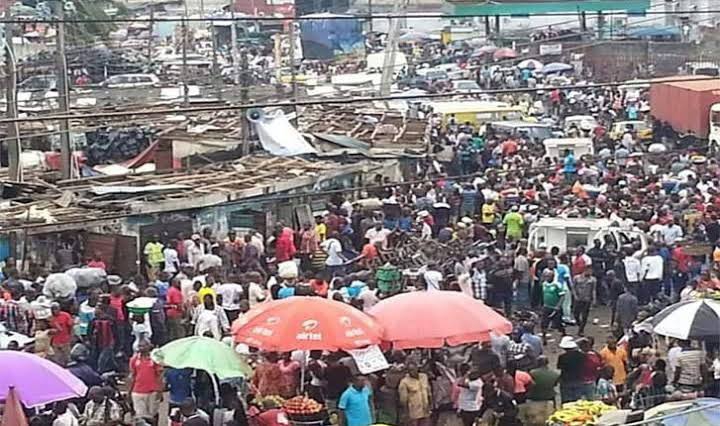


Explore the Largest Market in Nigeria and one of the Largest in Africa: The Onitsha Main Market
History African@africanhistory
1 day ago
Onitsha Main Market, located in the bustling city of Onitsha in Anambra State, Nigeria, is a must-visit destination for tourists seeking an authentic taste of West African commerce and culture. Often touted as the largest market in Africa by geographical size and volume of goods, this sprawling marketplace is a vibrant hub where trade, tradition, and tenacity converge. Situated along the eastern bank of the Niger River, it serves as the commercial heartbeat of southeastern Nigeria, drawing merchants and shoppers from across the region and beyond, including neighboring countries like Ghana, Cameroon, and Benin. Whether you’re a curious traveler, a bargain hunter, or someone captivated by the energy of urban life, here’s everything you need to know before you visit, along with tips to make your trip both enjoyable and educational.
The market’s history stretches back centuries, with economic activities traced to as early as the 16th century when it operated as Otu-Nkwor Eze, opening every four days in line with the traditional Igbo market calendar. Over time, it evolved from a local trading post—where goods like palm produce and crafts were bartered—to a daily commercial powerhouse under colonial influence and modern development.
Today, it’s governed by the Onitsha Market Traders Association and offers an astonishing array of goods: from clothing, textiles, and jewelry to electronics, household items, and industrial equipment. The market’s sheer scale can be overwhelming, with thousands of stalls spread across multiple sections, each specializing in specific wares, such as the textile-rich New Market or the electronics-heavy Iweka area.
For tourists, Onitsha Main Market is more than a shopping spot—it’s a cultural immersion. The air buzzes with the shouts of vendors haggling in Igbo, pidgin English, and other languages, while the scent of street food like roasted yam or suya wafts through the crowded lanes. The market’s layout is a chaotic maze, reflecting the organic growth of a place shaped by its people rather than rigid urban planning. You’ll see everything from high-end imported fabrics to second-hand “bend down select” clothing piles, offering a glimpse into the resourcefulness and entrepreneurial spirit of the traders. It’s not just about buying; it’s about witnessing a living ecosystem where millions of transactions fuel the regional economy daily.
Getting there requires some planning. Onitsha is roughly a 5–6 hour drive from Lagos, depending on traffic, or about an hour from nearby cities like Awka or Asaba via road. If you’re flying into Nigeria, the closest airport is Anambra International Cargo and Passenger Airport in Umueri, about 30 kilometers away, though many opt for Nnamdi Azikiwe International Airport in Abuja or Murtala Muhammed in Lagos, followed by a bus or taxi ride. Within Onitsha, tricycles (keke) and minibuses are the most practical ways to reach the market, though be prepared for a bumpy ride due to uneven roads. The market is centrally located, bordered by the Niger River to the west and residential areas like Fegge to the east, making it hard to miss once you’re in the city.
Timing your visit is key. The market operates daily from around 7:00 AM to 6:00 PM, but it’s busiest in the mornings when traders unpack fresh stock and crowds peak. Weekends can be especially hectic, while Mondays may see reduced activity due to occasional sit-at-home observances in the region—check local updates before planning. Nigeria’s tropical climate means hot, humid days year-round, with temperatures averaging 27–33°C (80–91°F). The dry season (November to March) offers the most comfortable weather, while the rainy season (April to October) brings downpours that can flood parts of the market, so pack a raincoat or umbrella if visiting then.
What should you bring? Comfortable, breathable clothing and sturdy shoes are essential, as you’ll be walking or standing for hours on uneven terrain. A small backpack works better than a purse for keeping your hands free, and bring a reusable water bottle to stay hydrated in the heat. Cash is critical—Naira in small denominations—since most vendors don’t accept cards, and ATMs can be scarce or unreliable nearby. A hat or sunglasses will shield you from the sun, and a portable fan might come in handy amidst the crowds. If you’re prone to mosquito bites, pack repellent, especially in the wet season.
For first-timers, a few tips can transform your experience. Go with a local guide if possible—they’ll help you navigate the labyrinthine stalls, interpret languages, and secure better deals. Bargaining is an art here; start at half the asking price and work up, keeping it friendly yet firm. Be prepared for sensory overload—narrow paths, loud chatter, and traders vying for your attention are all part of the vibe. Stick to bottled water and packaged snacks unless you trust your stomach with local street food, which is delicious but sometimes risky for newcomers. Pickpocketing can happen in crowded areas, so keep valuables secure and avoid flashy displays of wealth.
The market’s offerings cater to every budget. You can snag affordable souvenirs like beaded jewelry, Ankara fabrics, or leather sandals, or splurge on bulk electronics and imported goods if you’re a trader yourself. Beyond shopping, take time to observe: the rhythmic bargaining, the colorful displays, and the resilience of traders who’ve made this market a West African icon. Nearby, you can pair your visit with a trip to the Niger River for a boat ride or the Cathedral Basilica of the Most Holy Trinity for a dose of history, rounding out your Onitsha adventure.
Onitsha Main Market isn’t polished or tourist-tailored—it’s raw, real, and relentlessly alive. It’s a place where Nigeria’s past and present collide, where every stall tells a story of hustle and heritage. Approach it with an open mind, patience, and a sense of adventure, and you’ll leave with more than just purchases—you’ll carry a piece of its spirit.
#OnitshaMainMarket #NigeriaTravel #WestAfrica #MarketAdventures #IgboCulture #TravelTips #ShoppingHeaven #OnitshaVibes #TouristGuide #AfricanMarkets #CulturalExperience #ExploreNigeria
Photo Credit: Daily trust
